
Do you have a question about the Gateway Solo 9300 and is the answer not in the manual?
| Processor | Intel Pentium III |
|---|---|
| Display Size | 15 inches |
| Optical Drive | CD-ROM |
| Network | 56K Modem, 10/100 Ethernet |
| RAM | 64 MB |
| Storage | 6 GB |
| Display Resolution | 1024 x 768 |
| Operating System | Windows 98 |
| Ports | USB, Serial, Parallel, VGA, PS/2 |
Describes the front components of the notebook.
Describes the left side components of the notebook.
Describes the right side components of the notebook.
Describes the back components of the notebook.
Describes the bottom components of the notebook.
Steps to connect the AC adapter for power and charging.
Guidance on protecting the notebook from power surges.
Instructions on how to power on the notebook.
How to resume the notebook from standby mode.
Steps to properly shut down the notebook.
Explains the meaning of various system indicator lights.
Details the battery and power status LEDs.
General information about the notebook's keyboard.
How to use the elevating feet for keyboard angle adjustment.
Details on function keys and their uses.
Explains the purpose of multi-function buttons.
Guide to using the touchpad and its buttons.
Introduction to the Windows desktop and its components.
Explains common desktop icons and elements.
Describes the elements of a typical Windows window.
How to navigate and use the Windows Start menu.
Basic operations for managing files and folders.
Explanation of computer drives.
Concepts of folders and files.
Procedures for copying and moving files/folders.
How to delete and recover files/folders.
Navigating through folders to find files.
Using search utilities to locate files.
Guide to using the Windows Me search tool.
Guide to using the Windows 98 find tool.
Common keyboard shortcuts for Windows.
Options for customizing display and desktop appearance.
How to change the number of colors displayed.
How to change screen resolution.
How to adjust font size for desktop items.
How to apply Windows color schemes.
How to change the desktop wallpaper.
How to choose and configure screen savers.
How to reassign multi-function button actions.
Steps to create a new document in a word processor.
How to save a document.
How to open an existing document.
Steps to print a document.
How to use the 3.5-inch diskette drive.
Information on using the CD/DVD drive.
Procedure for inserting discs into the drive.
How to control system volume levels.
How to play audio CDs and DVDs.
Playing CDs using Windows Media Player.
Playing CDs using the CD Player.
How to play DVD movies.
How to record and play audio using Sound Recorder.
Guide to using the Windows Media Player.
Using the MusicMatch program for music playback.
How to play music CDs with MusicMatch.
How to rip music from CDs to MP3 files.
Organizing music tracks in a library.
Modifying metadata for music tracks.
How to listen to radio stations online.
Connecting the notebook to TVs or VCRs.
Using video capture software.
Configuring external audio input.
Basic overview of the Internet and its components.
Steps to set up an ISP account.
How to connect to and disconnect from the Internet.
Navigating the Web using a browser.
How to access specific websites.
Process of transferring files from the Internet.
How to send and receive email messages.
Instructions for composing and sending emails.
How to read incoming emails.
Setting up personal information for fax cover pages.
How to send a fax.
Steps to initiate sending a fax.
Faxing documents from applications.
How to receive and view faxes.
Procedures for receiving faxes.
How to maintain battery health and check status.
Ways to check the current battery level.
Tips for maximizing battery life.
How to replace the notebook battery.
Steps for battery replacement.
How to install an optional second battery.
Procedure to recalibrate the battery gauge for accuracy.
Customizing power management options.
Adjusting power schemes and timers.
Setting up low battery alarms.
Configuring power button and standby behavior.
Enabling the hibernate power saving feature.
How to disable screen brightness reduction on battery.
Adjusting processor performance based on power source.
Connecting external devices like printers.
Steps to connect the built-in modem.
How to insert and remove PC Cards.
Procedure for inserting a PC Card.
Procedure for removing a PC Card.
How to swap modular components.
Steps to replace bay modules.
Procedures for upgrading memory and hard drive.
Guidelines to prevent ESD damage during upgrades.
How to add or replace memory modules.
Steps to replace the primary hard drive.
Advice for using the notebook while traveling.
Tips for using the modem while traveling.
Tips for managing files when traveling.
Recommendations for securing the notebook.
Information on notebook power management and sources.
Using AC adapters and in-flight power.
How to monitor battery status.
Methods to save battery power.
Gateway accessories for the notebook.
Identifies components on the front of the port replicator.
Identifies components on the left side of the port replicator.
Identifies components on the back of the port replicator.
Connecting external video sources to the replicator.
Connecting the replicator to external displays.
Connecting the replicator to S-Video displays.
Identifies components on the right side of the port replicator.
Steps to connect the notebook to the port replicator.
Connecting video sources to the replicator.
Identifies front components of the docking station.
Identifies left side components of the docking station.
Identifies back components of the docking station.
Connecting external video sources to the docking station.
Connecting the docking station to external displays.
Connecting the docking station to S-Video displays.
Identifies right side components of the docking station.
Steps to connect the notebook to the docking station.
Configuring audio output for the docking station.
Resources for additional information and support.
Using HelpSpot for assistance with Windows.
Using QuickANSWERS for Windows 98 help.
Accessing help files within programs.
Information available on the Gateway website.
Recommendations before contacting support.
Contact information for technical support.
Essential safety guidelines for using the system.
Instructions for properly setting up the computer system.
Guidelines for safe operation and maintenance.
Information on using recommended replacement parts.
FCC and other regulatory compliance information.
FCC Part 15 and Part 68 statements.
Industry Canada (ICES-003) and modem notices.
Compliance with European directives and modem regulations.
VCCI statement for Japanese users.
EMI and telecommunication statements for ANZ.
Safety precautions for CD/DVD laser devices.
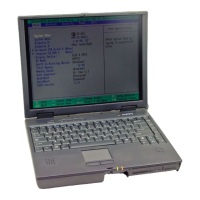
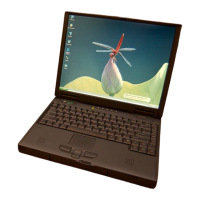




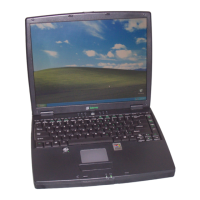
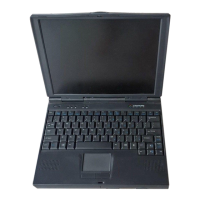


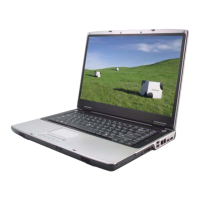

